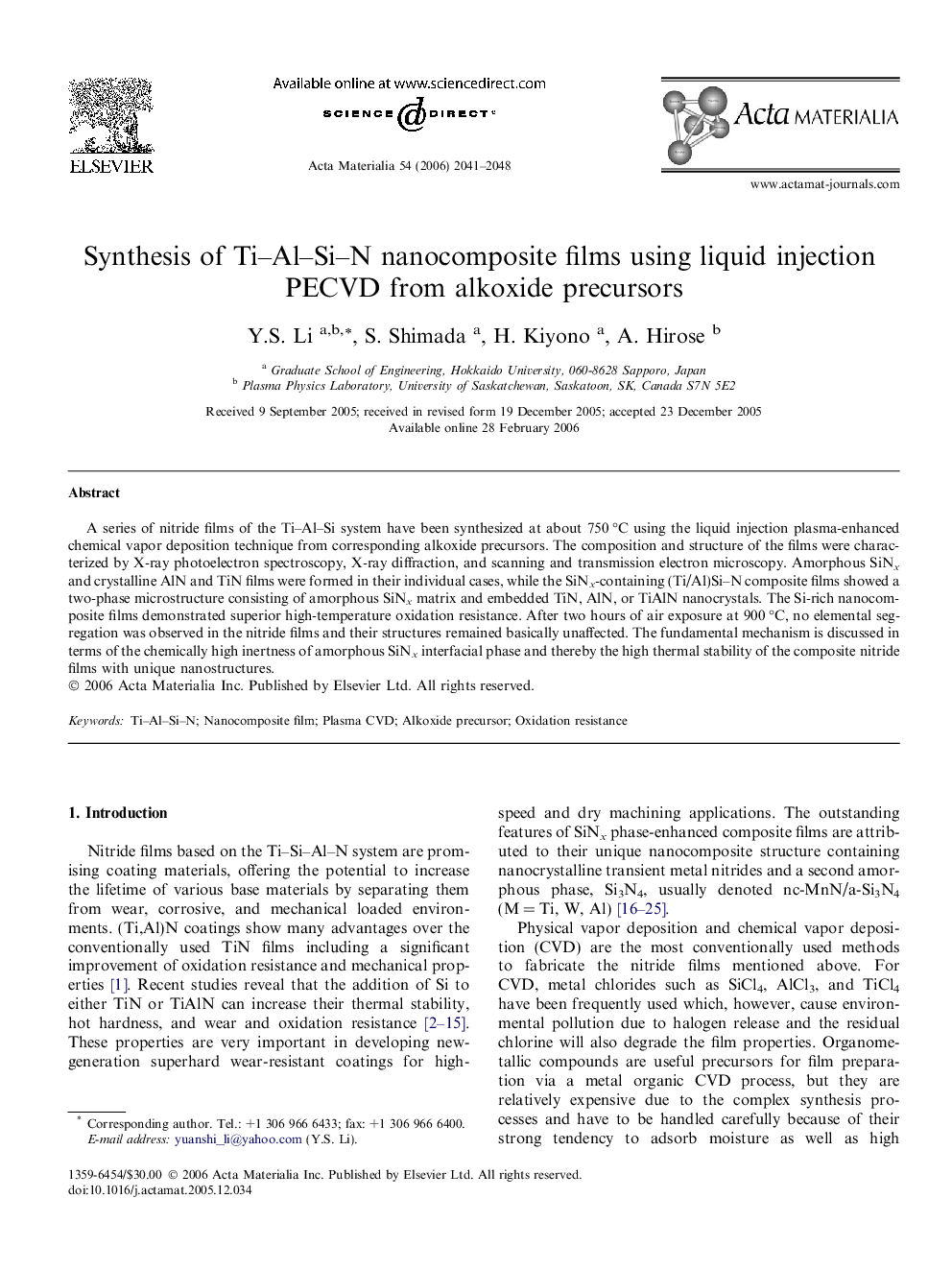| Article ID | Journal | Published Year | Pages | File Type |
|---|---|---|---|---|
| 1450435 | Acta Materialia | 2006 | 8 Pages |
A series of nitride films of the Ti–Al–Si system have been synthesized at about 750 °C using the liquid injection plasma-enhanced chemical vapor deposition technique from corresponding alkoxide precursors. The composition and structure of the films were characterized by X-ray photoelectron spectroscopy, X-ray diffraction, and scanning and transmission electron microscopy. Amorphous SiNx and crystalline AlN and TiN films were formed in their individual cases, while the SiNx-containing (Ti/Al)Si–N composite films showed a two-phase microstructure consisting of amorphous SiNx matrix and embedded TiN, AlN, or TiAlN nanocrystals. The Si-rich nanocomposite films demonstrated superior high-temperature oxidation resistance. After two hours of air exposure at 900 °C, no elemental segregation was observed in the nitride films and their structures remained basically unaffected. The fundamental mechanism is discussed in terms of the chemically high inertness of amorphous SiNx interfacial phase and thereby the high thermal stability of the composite nitride films with unique nanostructures.
